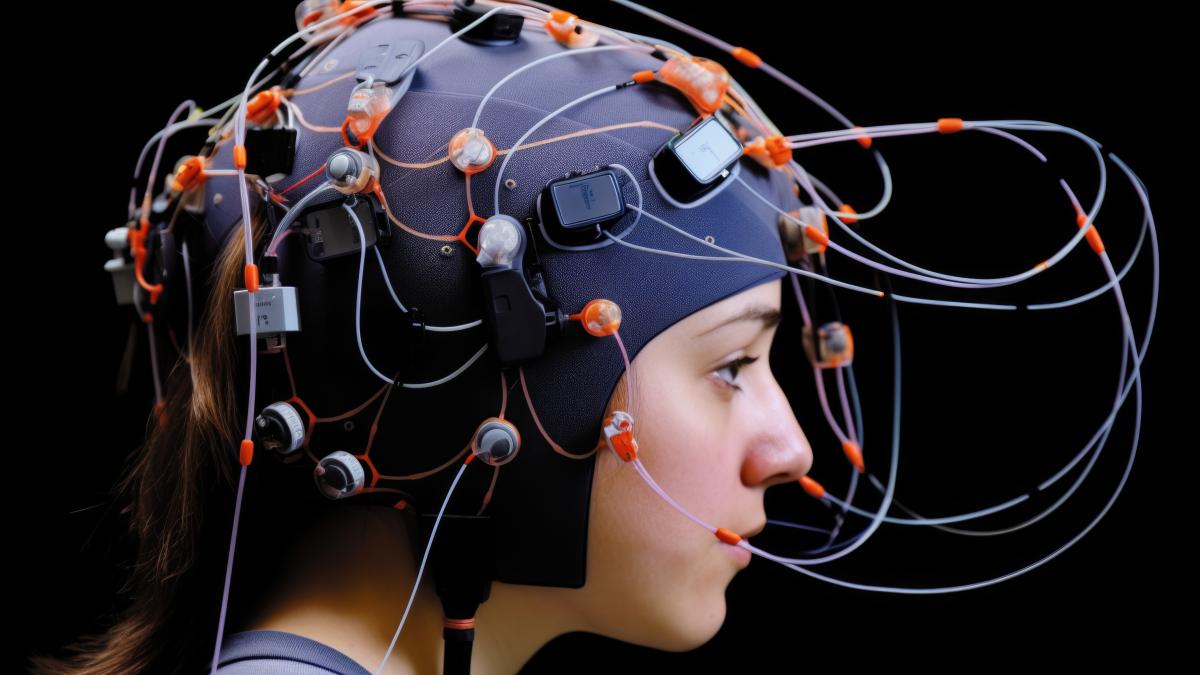The paralyzed patient utters the words through her thoughts alone. This is made possible by a new technology that converts signs into writing. The researchers see this as a turning point.
For example, brain-computer interfaces should enable people to talk again after a stroke. Two such approaches have been presented by two research groups in the journal nature before. In one study, a patient was able to express an average of 62 words per minute through her thoughts, and in the other work a woman was able to express 78 words per minute. This corresponds to about half the English speaking speed of 150 words per minute.
In one study, the group led by Francis Willett of Stanford University in California treated patient Pat Bennett, who had the neurological disease amyotrophic lateral sclerosis. This leads to progressive muscle paralysis, which also affects speech. The researchers implanted four arrays of tiny electrodes into areas of the brain associated with speech. The brain activity was linked to a computer system, which converted the signals into writing.
Four months later, one of the patients was able to pronounce 62 words
The patient trained the system about twice a week by speaking pre-set texts in her mind, and the researchers modified the system to fit her brain patterns. Four months later, the woman was able to say 62 words per minute just by thinking about her. This speed exceeds previous systems by more than three times. “For people who cannot speak, it means they can stay connected to the larger world, possibly continue to work and maintain relationships with friends and family,” Bennett said in a statement to Stanford University.
The second study, by a team led by Edward Chang of the University of California, San Francisco, also relies on a case study. This woman lost her ability to speak after suffering a stroke. The researchers used the electrocorticography method: brain signals are measured directly on the surface of the brain without the need for needles to be inserted into the brain, as is the case with microelectrode arrays. However, measuring electrodes must be applied to a larger area of the brain in this method.
During the test, the patient’s original voice was heard
Zhang’s group decoded the signals sent from the brain to the muscle groups involved in speech. It also focused on 39 phonemes, called phonemes, for word recognition – this should speed up word recognition. The avatar then speaks on screen, moving its mouth and lips in real time according to the decoded sounds. There is even a reconstruction of the patient’s original voice: for the speech modification, the team used the audio recording of a speech the woman gave at her wedding.
Read also about this
“These advances bring us much closer to developing a real solution for patients,” says Chang, according to a statement from his university. This patient averaged 78 words per minute. However, the word error rate for a vocabulary of 1024 words was one fourth. The Stanford team achieved an error rate of just under 24% with their patient, with a vocabulary of 125,000 words.
Experts see progress in restoring contacts
The system is still far from a device that people can use in everyday life, stresses Stanford researcher Willett. “But it’s a huge step forward in quickly restoring communication for paralyzed people who can’t speak.” natureCommenting on the turning point in the development of such technologies, Nick Ramsey of Utrecht University Hospital and Nathan Kron of Johns Hopkins University School of Medicine in Baltimore write. The next step now is to outfit the electrical implants with a wireless connection.
Torsten Zander of the Technical University of Brandenburg in Cottbus-Senftenberg sees a clear engineering progression. “The results presented are very promising in their practical application.” However, they have only been tested on people who have been training for several weeks. Souriju Sokadar, Chair of the Clinical Neurotechnology Working Group at the Berlin Charité, talks about a milestone in the development of brain-computer interfaces. But he also stresses that the two patients were specially selected for the studies. “There is still a long way to go before widespread use of these technologies can be envisaged.”

“Certified tv guru. Reader. Professional writer. Avid introvert. Extreme pop culture buff.”






More Stories
“They wish technology didn't exist”: Confusion counters media lawsuits
From Apple Watch to iPhone – powerful OLED technology can be transferred to your smartphone | news
Startups should come to Allgäu Airport: that's what four medium-sized companies plan to do with the Green Tech Hub – Current Allgäu News